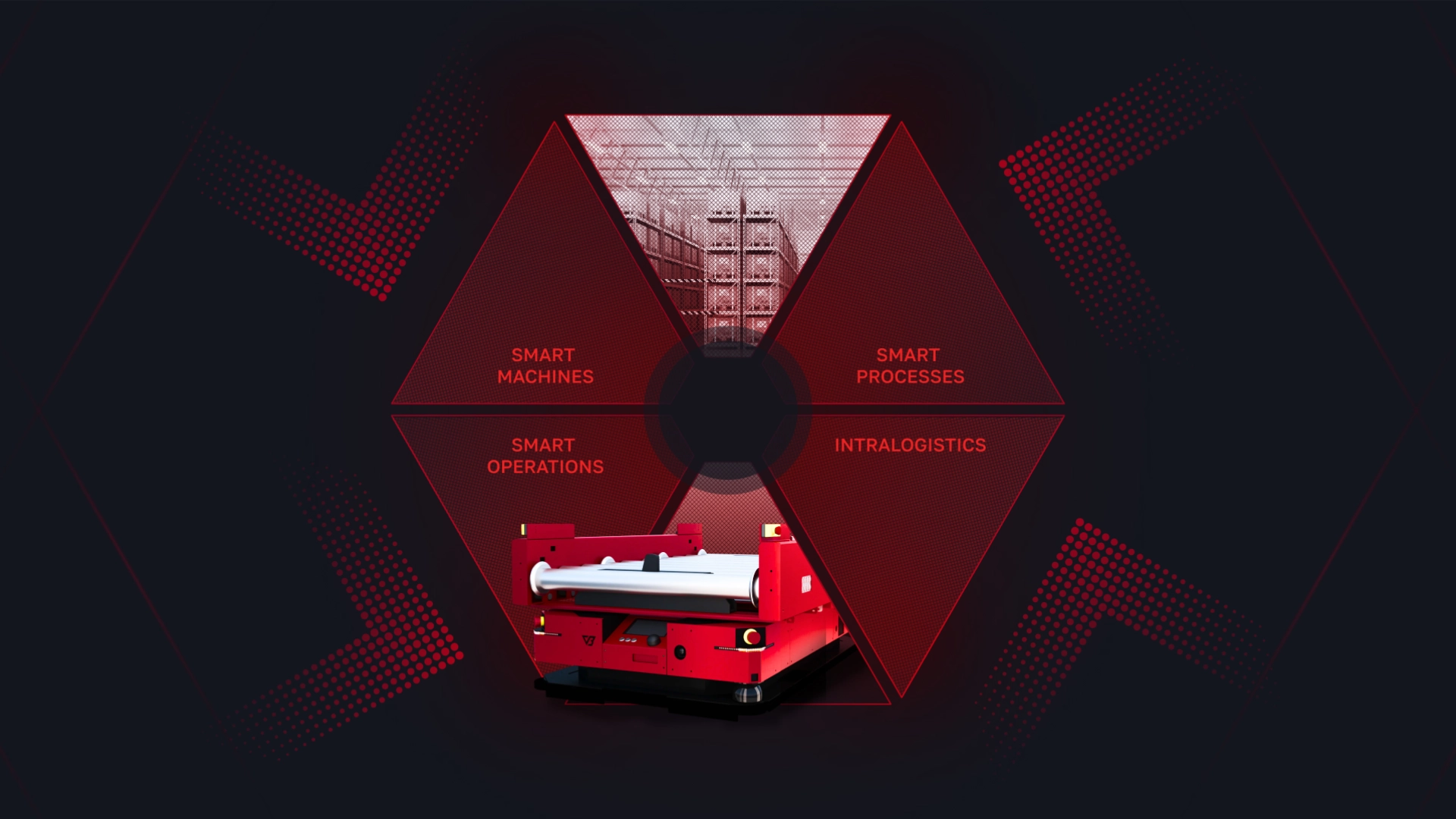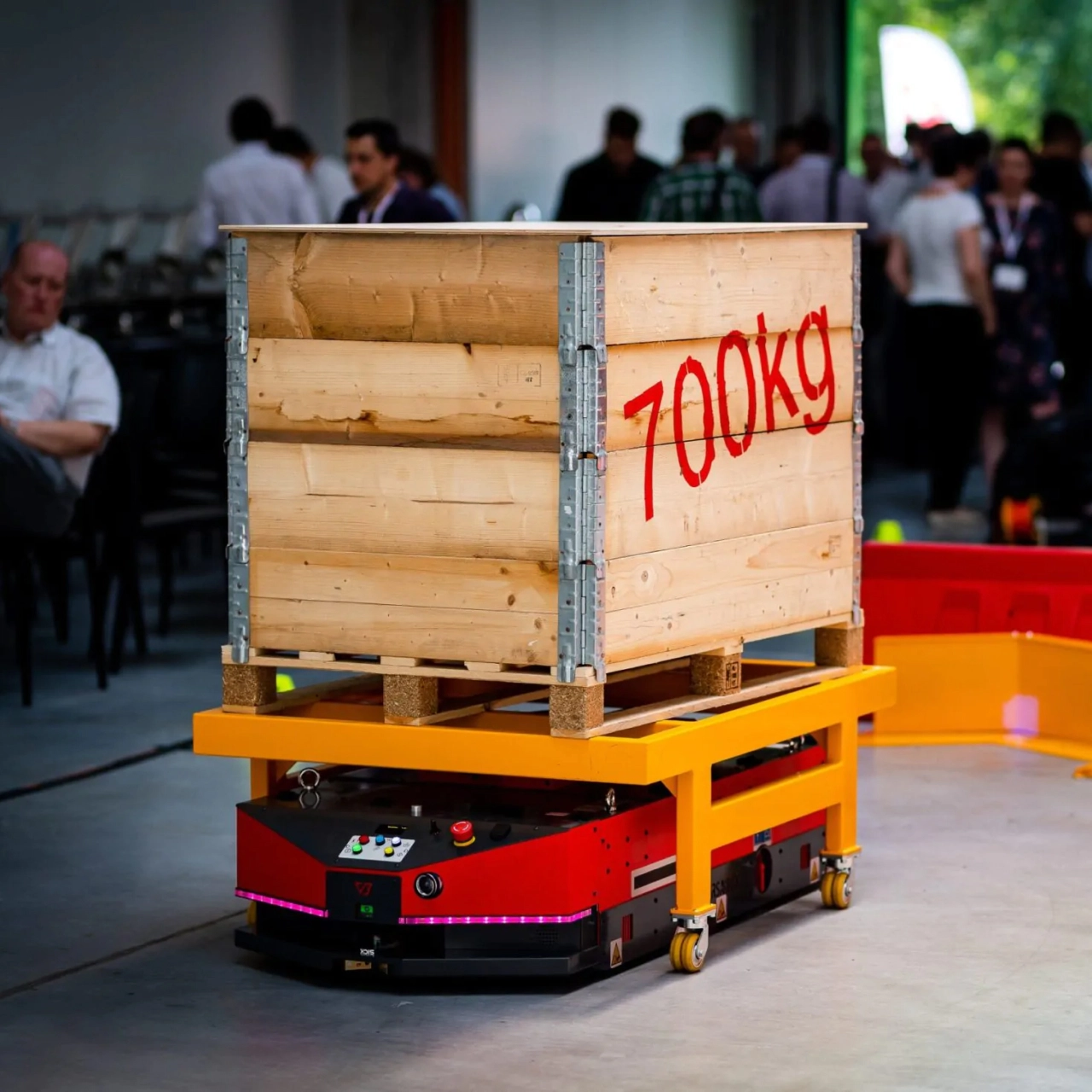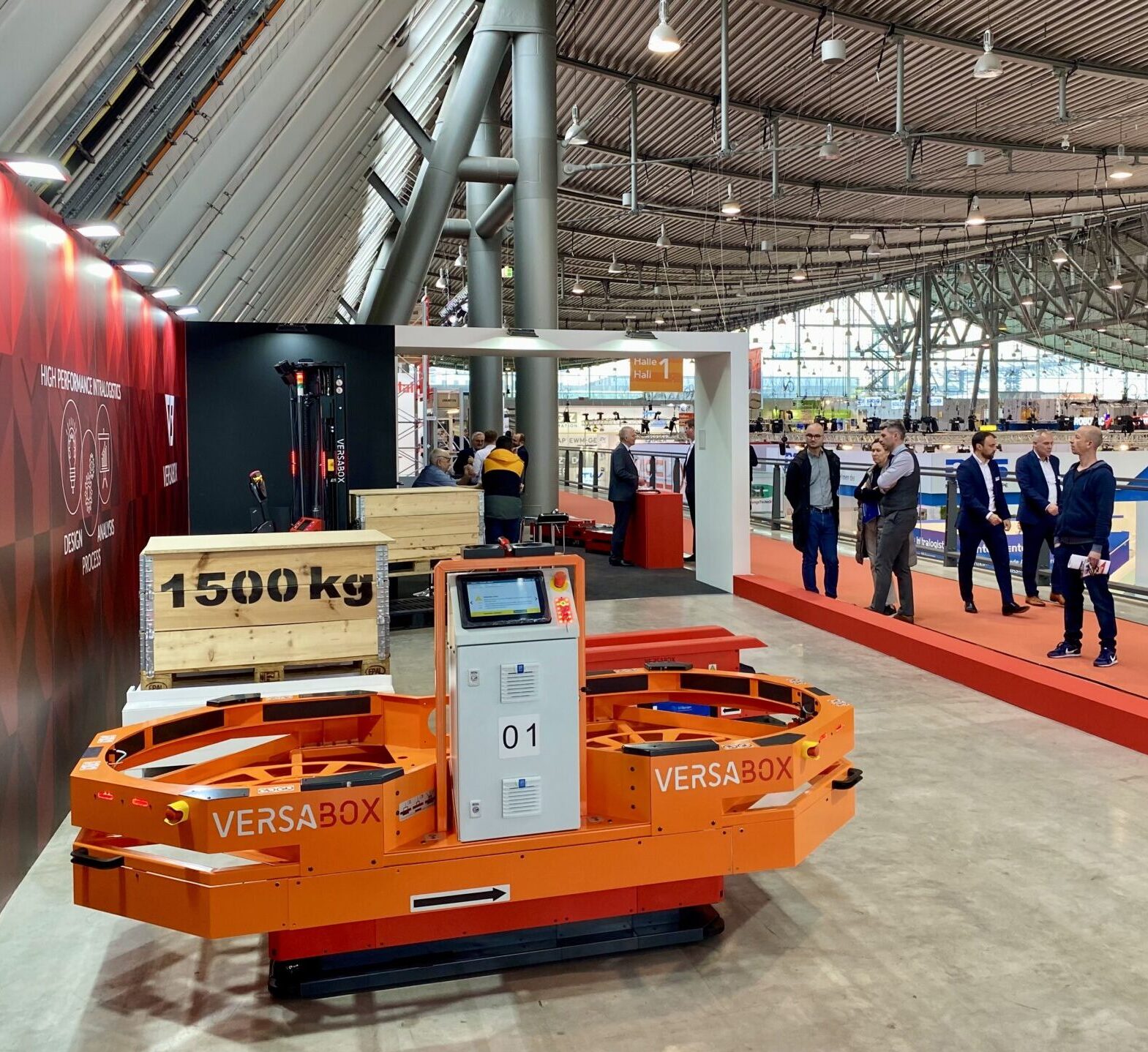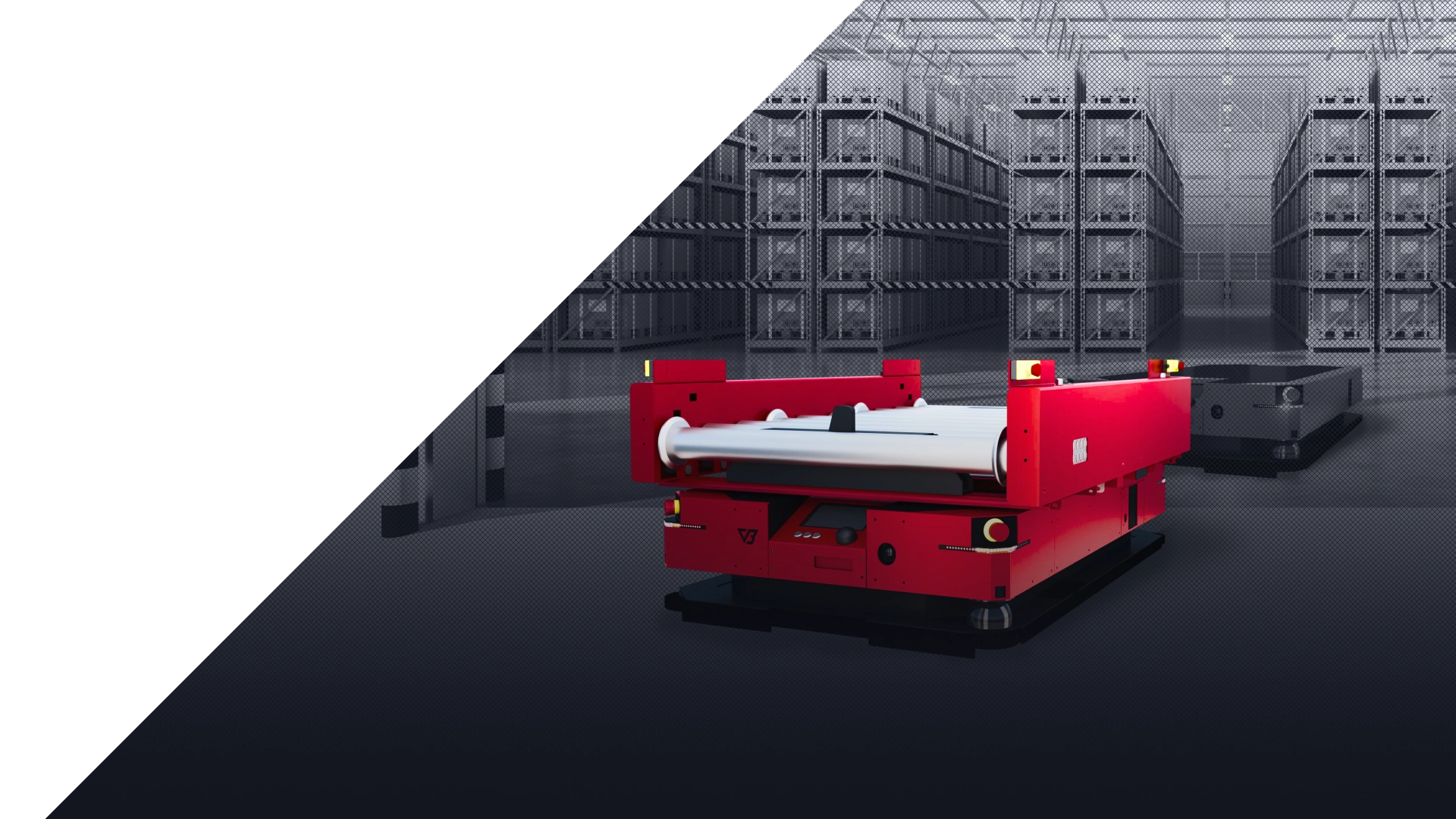
Smart Intralogistics
Intralogistics is the flow of materials within the enterprise. Most often, it includes organization, optimization and intelligent automation of internal transport processes.
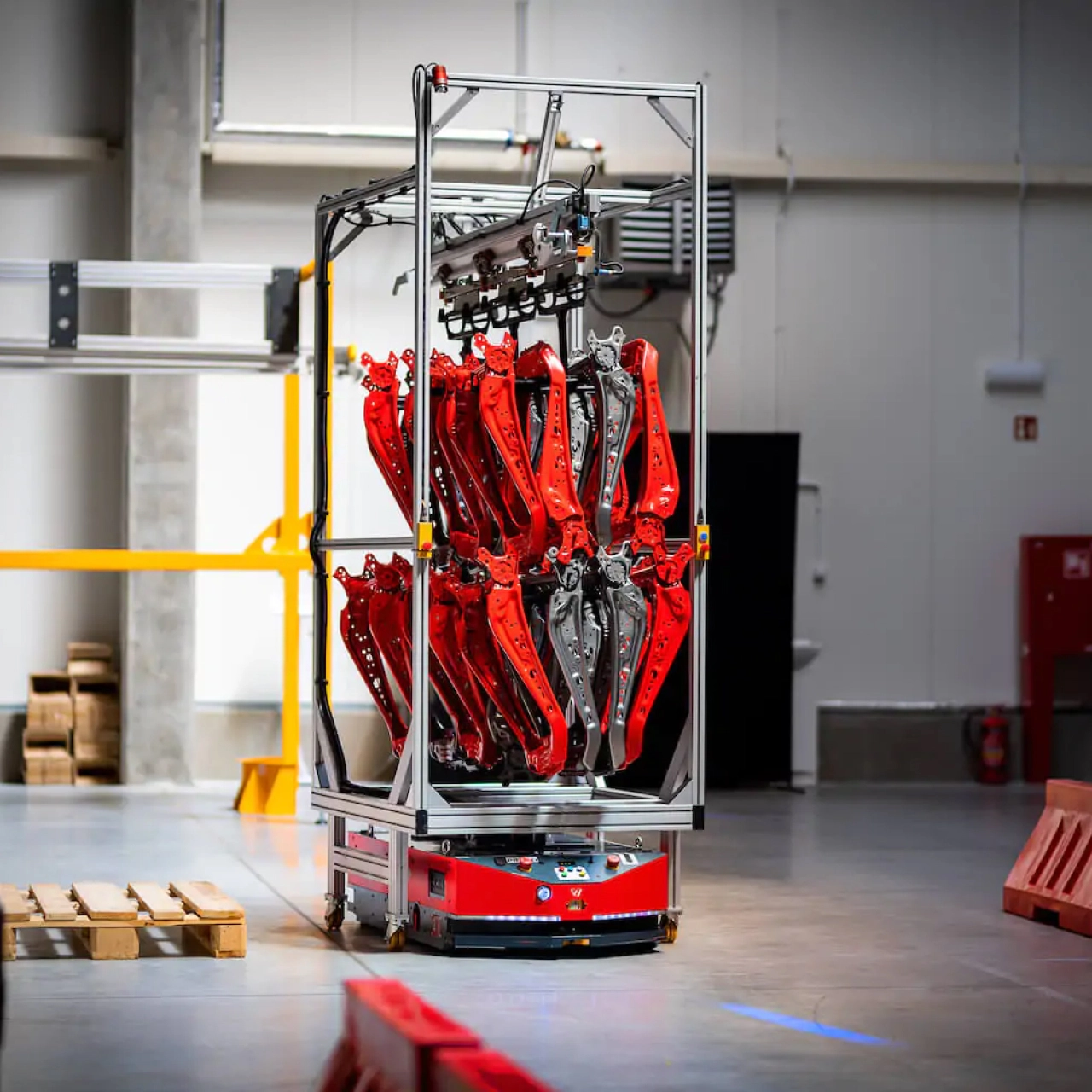
Intralogistics 4.0
AMR mobile robots and software for designing, implementing and monitoring intralogistics processes provided by VersaBox have become an innovation and revolution in the industry. Get to know our offer and possibilities of automating logistics processes in your company!
We provide full logistics infrastructure – from the implementation of hardware, software and intralogistics process design to service, training, updates and know-how.
The global world of manufacturing
has been adopting digital technologies for decades. This digital adoption accelerates as the digital tsunami transforms entire industries.
Combining task automation, autonomy and flexibilly to fill in for humans in task which require accuracy, reatability, endurance and adaptability to a changing enveroment.
Data generated by smart machines leading to more inteligent, flexible processes, faster business cycles, and faster management response to important events.
Data used to build simulators and predictive analytics solutions (eg Digital Twins) to improve efficiency and speed of opertaions or introduce new operating models.
Area involving internal processing of materials, components and related information – is a significant part of industrial value chain where operations need to change due to labour shortages, operational hazards and oftern obsolete, inefffcient technology.
Report
The case
Intralogistics is a significant part of industrial value chain affected by labour shortages, operational hazards and obsolete, inefficient technology. Automation of intralogistics has to be efficient, but also flexible. Product personalisation and unpredictable fluctuations of production volumes become important aspects of modern manufacturing challenging traditional intralogistics solutions.
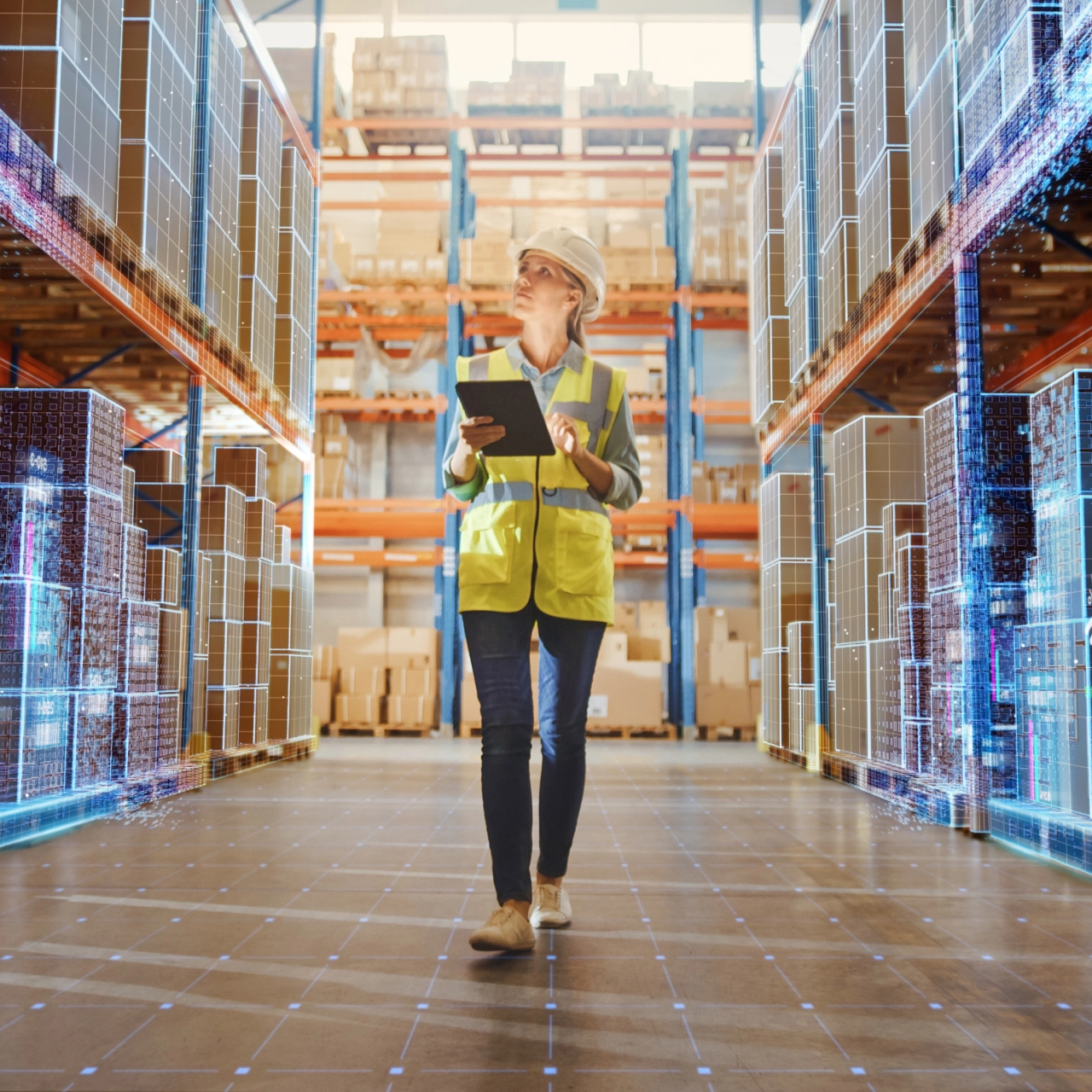
Key Benefits
The key capability of SMART INTRALOGISTICS is to quickly and cheaply introduce changes in material flow, to enable changing requirements of manufacturing or warehousing processes. Naturally the flexibility must not compromise fundamental productivity of operations and its cost efficiency. In discrete manufacturing and warehousing the most mature technology that delivers this capability is represented by Autonomous Mobile Robots (AMRs), the most advanced segment of AGVs (Automated Guided Vehicles).
This is the capability of executing intralogistics tasks (pickup, transport, handover of materials, components and goods) without human intervention or process related navigational “hard” infrastructure. Human intelligence creates benefits when applied to process optimisation, not to execution of mundane tasks related to transport of material. The “zero infrastructure” requirement is another important enabler of process agility. Autonomous units which are fully self reliant in executing transport assignments, can adopt to changes in intralogistics processes in real-time, without the need for costly and time consuming reconfiguration of beacons, guiding lines etc. In an industrial environment a fundamental requirement for this capability is reliable performance. It is not enough that autonomy works “most of the time”. From the perspective of master process (manufacturing or warehouse management) the reliability and performance of smart intralogistics solution has to match the reliability of all other process automation solutions.
The shop floor is a living environment, with many participants of daily traffic, changing floor layouts and traffic patterns. The autonomous components of intralogistics solution have to cope well with unpredictable behaviour of other traffic participants, enabling undisturbed execution of manufacturing operations. Also, they need to provide uncompromised compliance with industrial standards related to health and safety. Finally – as any digital solution – SMART INTRALOGISTICS requires mature approach to cybersecurity in deployment and operations.
This is the capability of simulating and predicting key performance aspects of intralogistics process configuration (such as throughput, cycle times, asset utilisation, energy consumption) without costly, and potentially disruptive experiments on the actual shop floor. This capability is the key to developing and maintaining a positive business case of investment in SMART INTRALOGISTICS solution based on AMRs.
Truly effective SMART INTRALOGISTICS solution takes more than deployment of smart robots. Essential components of the solution include AMR fleet coordination software (Mulit Robotic System – MRS), simulation environment, and seamless integration with systems governing shop floor operations (MES/WMS/ERP). Well designed SMART INTRALOGISTICS platform enables factory managers to view the intra-logistics as a “Plug-N-Play” process component of their manufacturing operations. Such capability simplifies management and improves the organisations potential for comprehensive digital transformation

This paper is a good starting point for those new to the concept of AMR based smart intralogistics. Start your transformation journey right by appreciating:
- Its importance as the enabler of digital transformation of manufacturing
- Benefits it can deliver to manufacturing and warehousing operations
- The key areas of readiness assessment
